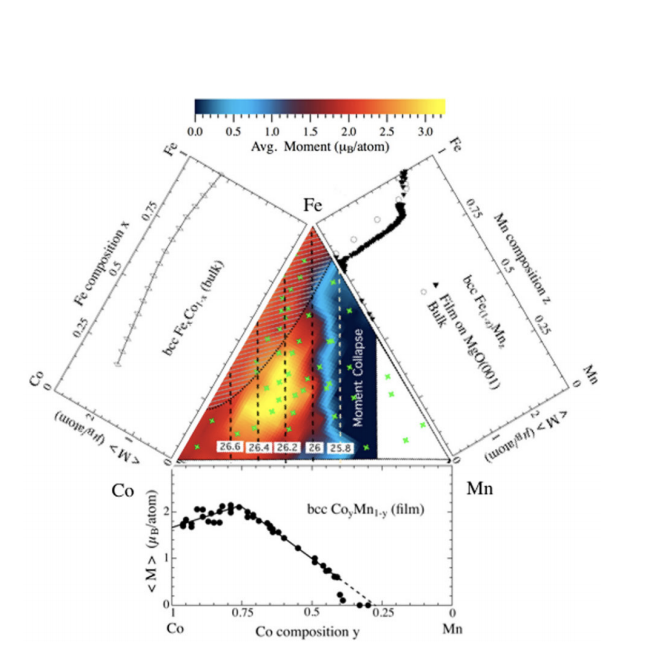Large magnetic moment bcc FexCoyMnz ternary alloy thin films
Large magnetic moment bcc FexCoyMnz ternary alloy thin films
Montana State University seeks a partner to license and commercialize a breakthrough metal alloy with magnetic moment up to 3.25 μB/atom—shattering the previous record of 2.45 μB/atom.
Status: Available for Licensing and/or Research Collaboration
Description:
The fields of spintronics and data storage have so far used magnetic materials limited by the Slater-Pauling curve governing magnetization density in alloys. Researchers at Montana State University and Lawrence Berkeley National Laboratory have developed a ternary FeCoMn alloy material with magnetic moment of 3.25 μB/atom—well beyond the previous record of 2.45 μB/atom, held by the binary FeCo alloy. This breakthrough has the potential to unlock the promise of numerous spintronics technologies, and to increase performance in magnetic data storage.
The technology uses epitaxial deposition to construct a bcc film for an alloy that would otherwise be fcc, driving its magnetic moment higher than the bulk material. While this was achieved using molecular beam epitaxy (MBE), the high magnetic moment film should be general to conventional manufacturing techniques, such as PVD sputtering.
The revolutionary new magnetic material may have uses in nonvolatile magnetic memory devices (e.g. MRAM, ST-MRAM, STT-MRAM), magnetic media (media, read/write heads), and sensors (GMR, TMR).

Benefits:
- High magnetic moment metal alloy improves existing technologies
- Material and device design techniques compatible with existing manufacturing techniques
Opportunity:
- Article published in Applied Physics Letters
- US patent issued and available for license and commercialization
- Potential for collaboration with MSU researchers to extend or tailor this technology
Contact:
Daniel Juliano, Ph.D.
406-994-7483
daniel.juliano@montana.edu
